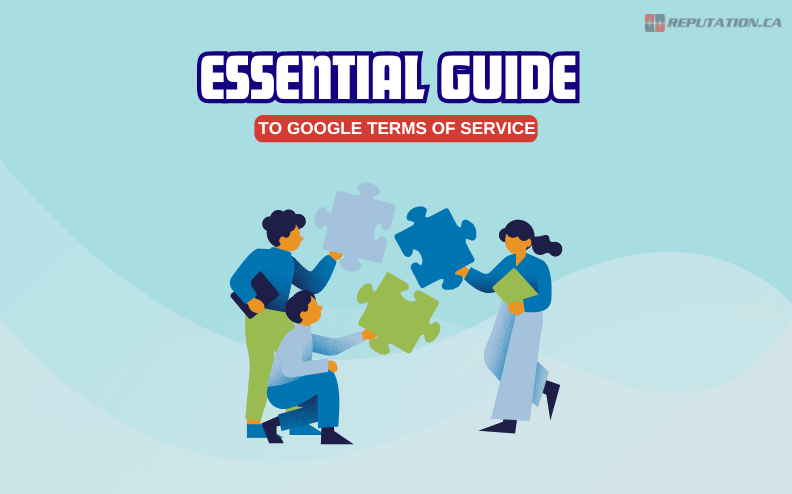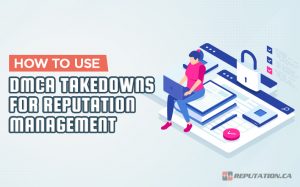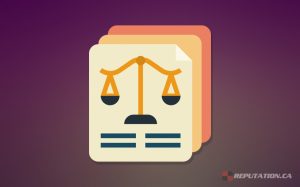Google Terms of Service (ToS) explain the rules for using Google’s services. They detail your rights and responsibilities and set expectations between you and Google. Knowing these terms helps you use Google services safely and legally.
Key Takeaways
- Google’s Terms of Service outline user responsibilities, intellectual property rights, and permissions related to user content.
- Users must comply with conduct rules, respect intellectual property, and have control over their uploaded content, including the ability to remove it.
- Privacy and data protection are prioritized in Google’s ToS, encompassing users’ rights to access and control their personal information.
Overview of Google Terms of Service

At the heart of your relationship with Google lies the Terms of Service, a legal contract that sets the stage for how you can use Google services. These terms define the framework within which both you, the user, and Google operate, establishing mutual expectations and obligations. In essence, it’s a blueprint for a smooth and compliant experience with Google’s vast array of offerings.
Anyone using Google services should understand these terms. They outline the rules you must follow and the responsibilities you bear while using services like Google Search, Google Photos, and Google Play. For instance, did you know that by using Google’s services, you agree not to misuse them or interfere with others’ usage? These are just a few of the many stipulations included in the ToS.
Transparency is a key aspect of Google’s philosophy, and the company encourages users to download and keep a copy of the ToS for future reference. This practice ensures that you’re always aware of the terms governing your use of Google services, preventing any surprises down the line.
The ToS also establish a clear relationship between you and Google, detailing what you can expect from the company and what Google expects from you. For example, while Google commits to providing reliable services, you are expected to use these services responsibly and ethically. This mutual understanding helps in maintaining a harmonious digital environment.
Moreover, the terms are not static. They can evolve to adapt to new legal requirements, security enhancements, or changes in user expectations. This fluidity ensures that the terms remain relevant and effective, safeguarding both users and Google.
Next, we’ll delve into the key provisions of Google’s ToS, breaking down the specific responsibilities, rights, and permissions that come with using these services.
Key Provisions in Google Terms of Service

Google’s ToS are comprehensive, covering various aspects of service use to ensure clarity and fairness. These provisions are designed to protect both Google and its users by setting clear guidelines and expectations. Understanding these key provisions is essential for anyone wanting to use Google services effectively and responsibly.
The ToS outline the responsibilities of users, ensuring that everyone knows what is expected of them when using Google services. For instance, users must adhere to specific conduct rules, respect intellectual property rights, and obtain necessary permissions for content they upload.
The ToS also cover Google’s intellectual property rights, ensuring that the company’s services and content are protected under law. This protection extends to the branding, logos, and other intellectual creations that Google provides.
Another critical aspect is the permissions related to user content. While Google does not claim ownership of your content, the terms explain what permissions you grant to Google when you upload or share content on its platforms. This section also details your control over your content, including how to remove it if needed.
In the following subsections, we’ll explore these areas in more detail, starting with user responsibilities, followed by intellectual property rights, and finally, content permissions.
User Responsibilities
As a user of Google services, you have specific responsibilities that help maintain a respectful and lawful digital environment. You must comply with the ToS and any additional service-specific terms to continue enjoying access to Google’s offerings. This means adhering to all rules and guidelines set forth by Google.
Respectful behavior is paramount. Users must maintain a respectful environment and adhere to any service-specific additional terms. Should you encounter any conduct violations, Google provides mechanisms for reporting abuse, helping to keep the community safe and respectful.
Users should avoid copying, modifying, distributing, selling, or leasing any part of Google’s services or software. This stipulation ensures that Google’s intellectual property remains protected and that users engage with the services in a lawful manner.
Additionally, if you wish to use content that belongs to other people or organizations, you must obtain permission from the content owner in accordance with applicable law. This rule helps protect the rights of content creators and fosters a culture of respect and legality.
Knowing these responsibilities helps you stay compliant and enhances your overall experience with Google services. By adhering to these guidelines, you contribute to a safer and more respectful online community.
Next, we’ll explore intellectual property rights within Google’s ToS, highlighting how these rights are protected and what they mean for you as a user.
Intellectual Property Rights
Intellectual property rights are a fundamental aspect of Google’s ToS, safeguarding the creative and innovative elements of both users and the company. Users retain the rights to the content they create and submit, ensuring their intellectual property is protected. These rights include inventions, literary and artistic works, designs, and trademarks, all of which are legally protected. Google respects these rights and expects its users to do the same. For instance, if you create original content, you hold the intellectual property rights to that content.
Google also retains all rights to its services and content under intellectual property laws. This means that while you can use Google’s services, you cannot claim ownership over them or use them in ways that violate these rights. Google provides guidelines for using its branding or logos, which can be found on the Google Brand Permissions page.
The content license remains valid as long as the content is under intellectual property protections. Once those protections expire, the license is no longer applicable. This ensures that your rights are preserved for the duration of the protection period, giving you control over your creations.
Understanding these rights and how they apply to your use of Google services is crucial. It helps ensure that you respect the intellectual property of others while protecting your own creative works.
Next, we’ll look at content permissions within Google’s ToS, detailing what permissions you grant to Google when you use their services.
Content Permissions
Uploading or sharing content on Google services involves understanding the permissions you grant to Google. Importantly, Google does not claim ownership over your content. You retain the necessary rights to your uploaded content, maintaining control over your intellectual property.
Using Google’s services involves granting Google certain permissions to host, reproduce, and distribute your content. This is necessary for Google to provide its services effectively. For instance, if you upload a video to YouTube, Google needs permission to display it to other users. These permissions are typically non-exclusive and limited to what is necessary for the service to function.
Users also have the right to remove their content from Google’s services. If you decide to delete something, Google’s systems will stop making that content publicly available within a reasonable amount of time. This control ensures that you can manage your digital footprint as you see fit.
Knowing these permissions helps you make informed decisions about what content to upload and share on Google’s platforms. It also reassures you that you retain significant control over your intellectual property.
Next, we’ll discuss the age requirements and parental consent necessary for using Google services, ensuring that both parents and children understand the rules.
Age Requirements and Parental Consent
Age requirements are a critical aspect of Google’s ToS, especially for younger users. Typically, a minimum age of 13 is required for a child to have their own Google Account, although this can vary depending on local laws. Knowing these requirements helps ensure responsible account creation and management.
For parents, Google offers tools like Family Link to help supervise their child’s account. Family Link allows parents to manage app downloads, screen time, and other account settings, providing a safeguard for younger users. This tool is invaluable for ensuring that children use Google services safely and appropriately.
When a child reaches the age of 13 or the applicable local age, they gain control over their Google Account unless otherwise specified. This transition helps young users take ownership of their digital presence while still providing a framework for parental guidance.
By understanding these age requirements and utilizing tools like Family Link, parents can help their children navigate the digital world safely and responsibly.
Next, we’ll explore how organizations can use Google services, including the responsibilities of representatives and administrators.
Using Google Services on Behalf of Organizations
Organizations often rely on Google services for their operations, but using these services comes with specific responsibilities and rules. An authorized representative must accept the terms to use Google services on behalf of an organization. This ensures that there is a clear understanding of the obligations and responsibilities involved.
Administrators within the organization can assign Google Accounts and enforce additional rules. This ability allows organizations to manage their digital environment effectively, ensuring compliance with both internal and Google’s policies.
Users cannot use Google’s services for commercial purposes without prior approval. This stipulation helps protect Google’s services from being misused for unauthorized commercial activities.
In the European Union, Google services are governed by specific rights as per the EU Platform-to-Business Regulation. This regulation ensures that businesses using Google services are treated fairly and transparently.
Knowing these rules helps organizations use Google services responsibly and stay compliant with relevant regulations.
Next, we’ll discuss the types of service-related communications users can expect from Google, including updates and notifications.
When using Google services, you can expect to receive various types of communications. These include service announcements, administrative messages, and information on policy changes. Such communications are essential for keeping you informed about important updates and changes that might affect how you use Google’s services.
For instance, Google will notify you of changes to the Terms of Service at least 30 days in advance through email or other means. This advance notice gives you time to review and understand the changes, ensuring that you remain compliant with the updated terms.
Communications also include updates about new features and significant changes to existing services. These notifications help you stay current with the latest enhancements and improvements, allowing you to make the most of Google’s offerings.
Additionally, Google may tailor communications based on your service usage patterns. This personalized approach ensures that you receive relevant information that directly impacts your experience with Google’s services.
By staying informed through these service-related communications, you can use our services more effectively and remain aware of any significant changes that might affect us as you use your usage.
Next, we’ll look into how to handle problems and disputes with Google, including your legal guarantees and the dispute resolution process.
Handling Problems and Disputes
Despite the seamless experience that Google aims to provide, problems and disputes can occasionally arise. When they do, it’s crucial to understand your rights and the processes in place to address these issues. Users are entitled to legal rights granted by consumer protection laws, as well as additional rights stated in Google’s ToS.
If a problem occurs, you have the right to receive quality service from Google. This means that the company is committed to resolving issues in a fair and timely manner. Google’s liability for breaches under its ToS is limited to breaches of the terms or service-specific additional terms.
Legal claims against Google can include contract issues, tort (including negligence), or other lawful reasons. If you encounter a problem, Google may take action in response to formal complaints or disputes, which includes contacting you to address the issues raised.
Understanding these processes helps ensure that you can effectively address any problems or disputes that arise, maintaining a smooth and functional relationship with Google’s services.
Next, we’ll delve deeper into the legal guarantees for users and the detailed dispute resolution process.
Legal Guarantees for Users
Consumers using Google services are entitled to several legal guarantees, including a legal guarantee of conformity and a legal guarantee for hidden defects related to Google’s digital content, services, and goods. These guarantees provide a safety net, ensuring that you receive the quality and functionality promised.
These legal guarantees cover a period of two years from the date of delivery for both digital content and services. If a lack of conformity is established within the first year, you can invoke the legal conformity guarantee. This guarantee ensures that any discrepancies or issues are addressed promptly.
In cases of serious lack of conformity, consumers are entitled to a price reduction or to rescind the contract. Additionally, users in the EU or UK have the right to cancel their purchase within 14 days without giving a reason. This right provides flexibility and protection for consumers.
Before Google takes action in case of problems, users should provide advance notice and a reason, allowing the opportunity to clarify the issue. This step ensures that both parties have a chance to resolve the problem amicably.
By understanding and invoking these legal guarantees, you can ensure that your rights are protected, and any issues with Google’s services are resolved effectively. Next, we’ll explore the dispute resolution process in more detail, outlining the steps you can take if a problem arises.
Dispute Resolution Process
If you encounter issues with Google services, understanding the dispute resolution process is essential. Consumers in the EEA or Switzerland can file legal disputes in their local courts regarding issues with Google’s services. This local access ensures that you can seek resolution in a familiar and accessible legal environment.
Residents or organizations in the EEA or Switzerland can also file legal disputes in their local courts, making it easier to address issues without the need for international litigation. This provision ensures that legal processes are straightforward and accessible.
Users have the legal guarantee of conformity, which obliges Google to provide necessary updates to maintain conformity. This guarantee ensures that Google’s services remain functional and effective throughout their usage.
In the case of hidden defects, consumers can receive a full refund or a price reduction. If you choose to keep the digital content or service, you may still receive a price reduction under the legal guarantee for hidden defects.
A commercial guarantee can be offered as an optional commitment. This is in addition to the legal guarantee of conformity. This commitment offers additional protection and assurance for consumers.
Consumers have two years from the discovery of a defect to claim under the legal guarantee for hidden defects. This extended period ensures that you have ample time to identify and address any issues with Google’s services.
By understanding the dispute resolution process, you can effectively navigate any issues that arise and ensure that your rights are protected.
Next, we’ll discuss account management and security, providing tips and best practices for keeping your Google account safe.
Account Management and Security
Managing and securing your Google account is vital for protecting your personal information and ensuring a smooth user experience. Google provides security alerts to users in case of potential threats to their accounts. These alerts help you stay informed about any suspicious activity and take action promptly.
Two-factor authentication is a powerful tool that can enhance the security of your Google account. By requiring a second form of verification, it adds an extra layer of protection against unauthorized access.
Regularly updating your passwords is another essential practice for maintaining account security. This simple step can prevent many common security issues and keep your account safe from hackers.
Google also provides tools to recover accounts if access to google is lost. These tools ensure that you can regain control of your account quickly and efficiently, minimizing downtime and disruption.
Frequently checking your account settings allows you to manage security effectively and control who has access to your account. This proactive approach helps you stay on top of any changes and maintain a secure digital environment.
Next, we’ll explore the circumstances under which Google may suspend or terminate services, and what you can do if this happens.
Termination and Suspension of Services

Google reserves the right to suspend or terminate services if users repeatedly violate terms or policies. This measure ensures that the platform remains safe and functional for all users. If Google suspects that a user’s actions may cause harm, they may take immediate action to suspend or terminate services.
Services can also be suspended or terminated for breach of terms or reasonable notice as part of the services. This flexibility allows Google to address serious violations promptly while still providing users with a chance to rectify their actions.
Upon termination or suspension, Google may provide users with advance notice, except in urgent situations. This notice period allows users to understand the reasons for the action and take appropriate steps if necessary.
Users have the right to appeal against the suspension or termination of their Google account if they believe it was done in error. This appeal process ensures that users have a fair chance to present their case and resolve any misunderstandings.
By understanding these provisions, you can navigate potential issues with termination and suspension more effectively, ensuring that your use of Google services remains uninterrupted.
Next, we’ll discuss Google’s privacy and data protection measures, highlighting how your personal information is safeguarded.
Privacy and Data Protection

Privacy and data protection are paramount in Google’s ToS. Personal information under Google’s policy includes details such as your name, email address, billing information, and data linked to your Google Account. This information is collected to provide you with personalized and efficient services.
Google collects various types of content from users, including emails, photos, videos, documents, and comments on YouTube. This data helps Google enhance its products and services while being handled under strict privacy protocols.
Google LLC serves as the data controller for processing information in its services, such as Google Search and Google Maps. Regardless of where the information is processed, Google applies the same protections as outlined in its privacy policy.
EU or UK users have specific rights regarding their information, including access to, updates of, removal of, and restrictions on processing their data. These rights provide robust protections and ensure that users can manage their personal information effectively.
Safe Browsing technology is employed by Google to protect users by detecting and blocking security threats automatically. This proactive approach helps safeguard your data and ensures a secure online experience.
Next, we’ll explore how and why Google updates its ToS, and what this means for users.
Updates to Terms of Service
Google updates its Terms of Service periodically to comply with legal requirements, enhance security, and introduce new features. These updates ensure that the terms remain relevant and effective in a rapidly changing digital landscape.
Types of updates include legally-required updates, changes for safety or security, and feature modifications. These changes are designed to protect users and ensure that Google’s services continue to meet high standards of quality and security.
Users who do not agree to the new terms should remove their content and discontinue using the services. This option allows users to maintain control over their digital interactions and make informed decisions about their service use.
Knowing these updates helps you stay compliant with Google’s ToS and remain aware of the latest changes and their implications.
Next, we’ll discuss how to manage and monitor your brand reputation while staying compliant with Google’s ToS.
Managing and Monitoring Your Brand Reputation and Staying Compliant with Google’s TOS
Effective brand reputation management involves creating positive content, eliminating negative content, and continuously monitoring and managing your online presence. This proactive approach helps maintain a positive image and ensures that your brand remains trustworthy and respected.
Negative online content can significantly harm both individual and business reputations, making its management crucial. By addressing negative content promptly and effectively, you can mitigate its impact and protect your brand’s reputation.
Utilizing specialized software for tracking online mentions across millions of sources can enhance brand monitoring efforts. These tools provide valuable insights into how your brand is perceived and help you respond to any issues quickly.
Staying compliant with Google’s ToS is also essential for maintaining a positive brand reputation. By adhering to the terms and guidelines, you can avoid potential pitfalls and ensure that your use of Google’s services aligns with best practices.
By combining effective reputation management with compliance, you can build a strong, positive presence online and leverage Google’s services to their fullest potential.
Next, we’ll summarize the key points covered in this guide and provide some concluding thoughts.
Summary
Understanding Google’s Terms of Service is essential for anyone using their services. From user responsibilities and intellectual property rights to content permissions and privacy protections, these terms outline the framework for a safe and effective digital experience.
By adhering to the ToS, you can ensure that you use Google’s services responsibly and ethically, protecting both your rights and the rights of others. This understanding also helps you navigate potential issues and disputes, ensuring that you can resolve problems effectively.
Staying informed about updates to the ToS and managing your brand reputation while remaining compliant further enhances your experience with Google’s services. By taking a proactive approach, you can leverage these tools to their fullest potential and maintain a positive online presence.
As you continue to use Google’s services, remember that understanding and adhering to the ToS is not just about compliance—it’s about making informed decisions and protecting your digital rights.
Now, let’s address some common questions about Google’s ToS.
Frequently Asked Questions
What should I do if I disagree with changes to Google’s ToS?
If you disagree with changes to Google’s ToS, the best course of action is to remove your content and cease using their services. This approach protects your interests while ensuring you are not bound by terms you do not accept.
How can I report abuse or conduct violations on Google services?
You can report abuse or conduct violations on Google services by using their designated reporting features, found within the service or platform you are using. This action helps maintain a safe and respectful online environment.
If you discover a hidden defect in Google services, you have the right to a full refund or a price reduction under legal guarantees. It is important to act promptly to ensure your rights are upheld.
How can I enhance the security of my Google account?
To enhance the security of your Google account, enable two-factor authentication and regularly update your passwords. These steps significantly reduce the risk of unauthorized access.
How does Google notify users of changes to the Terms of Service?
Google notifies users of changes to the Terms of Service at least 30 days in advance, typically via email or other communication methods. This ensures that users have ample time to review the updates.








